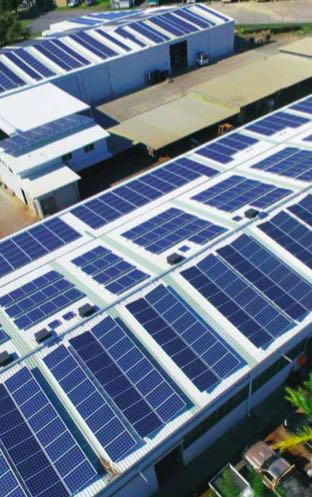Solar energy – on the rooftop of homes and businesses and increasingly in large scale ground mounted arrays – provided more than 3 per cent of Australia’s electricity demand in 2016, and appears on track to deliver at least 30 per cent by 2030, before becoming the dominant source of power for the sunburnt country.
New data released on Tuesday by the Clean Energy Council shows renewable energy provided 17 per cent of the nation’s power demand in 2016 – its highest in more than half a century (since Snowy Hydro was completed).
But the big mover is the growing share of solar. Its generation jumped 29 per cent in the last year, and it accounted for 3.16 per cent of total generation across the country in 2016. That is expected to continue to grow significantly – 10 fold over the next 14 years, and to more than half of all generation by 2050.
In 2016, small scale rooftop solar power, with some 5.5GW located on more than 1.6 million homes and small businesses, provided 2.76 per cent of total generation, while medium scale PV (from 100kW to 5MW) provided 0.19 per cent, and large scale solar PV (5MW and bigger) provided 0.21 per cent.
Large scale solar, however, is expected to dramatically increase its share over the next two years with more than 2,000MW under construction or about to be built, and thousands of megawatts more in the pipeline.
 “Between household, commercial and large-scale solar power, solar power production increased by more than a quarter (29 per cent) during the year,” CEC chief executive Kane Thornton says.
“Between household, commercial and large-scale solar power, solar power production increased by more than a quarter (29 per cent) during the year,” CEC chief executive Kane Thornton says.
“Significantly, many businesses are switching on to the idea of generating their own renewable energy to manage electricity prices that continue to rise following a decade of energy and climate policy uncertainty.”
That is being seen in both the rooftop market, with record installations so far in 2017 from homes and businesses, and in the large scale market, with the likes of Sun Metals building its own 116MW solar farm, and Monash University also tendering (for either 40MW of new wind or solar) to reduce its bills and push to greater renewables.
The CEC data shows that the fastest-growing sector of the solar market has been commercial systems between 75-100 kW, helping to pushup the average size of solar power systems to 5.56 kW at the end of 2016.
Commercial systems between 30-100kW are particularly popular in the ACT, New South Wales, South Australia and the Northern Territory, where they make up about 30 per cent of sales.
Solar now accounts for around half of the new projects being built to meet the federal 2020 renewable energy target, according to figures provided by the Clean Energy Regulator.
The Australian Renewable Energy Agency suggests that solar will provide 30 per cent of all demand by 2030 as its costs continue to fall, and the CSIRO and Energy Networks Australia recently said that distributed generation, mostly solar accompanied by battery storage, will meet nearly half of all demand by 2050. That does not include large scale solar.










